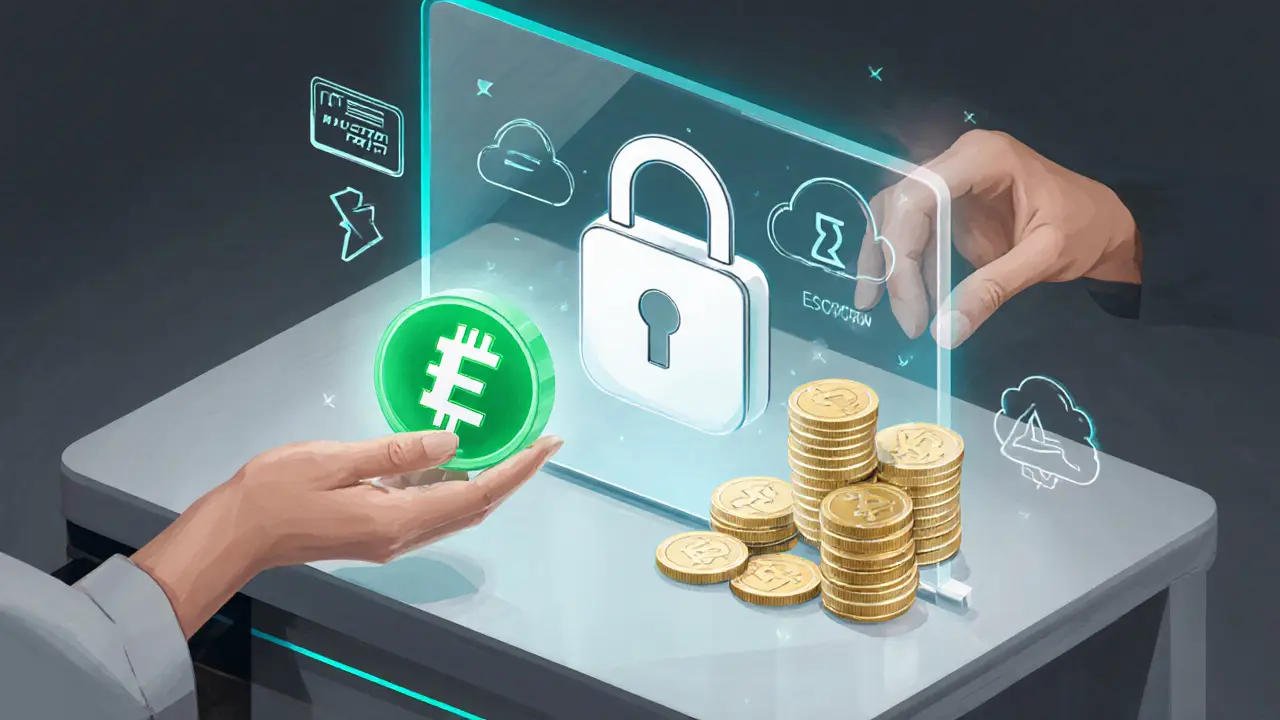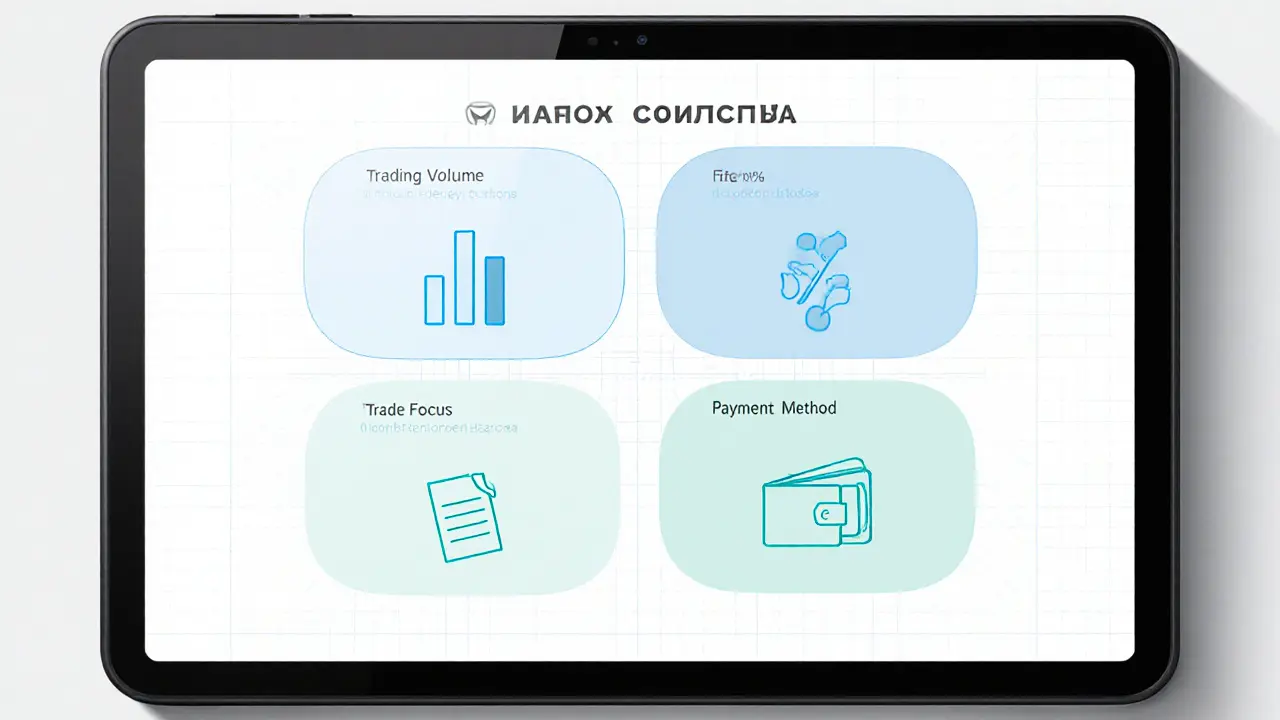Russian P2P Crypto Trading Platform Selector
Select your preferred trading features to find the best Russian P2P platform for your needs.
Recommended Platform
Ads (24h):
Volume (24h):
Trading Fee:
Key Features:
When you hear the term P2P crypto trading Russia refers to peer‑to‑peer exchanges where Russian users swap digital assets directly for rubles without a traditional exchange acting as a middleman, the first question is usually: which platform should I trust, and what could go wrong?
Quick Overview
- Bybit dominates the Russian P2P market with the highest ad count and daily volume.
- MEXC, Bitget, KuCoin, HTX and Gate.io also serve sizable user bases.
- Key risks include counter‑party defaults, platform freeze, payment‑method blocks, and price volatility.
- Use escrow, strong 2FA, and verify reputation scores above 95% to stay safe.
- Future trends point toward tighter regulatory tools and better dispute mechanisms.
How P2P Trading Works in Russia
Most Russian traders start by buying a stablecoin-usually USDT-on a spot market. They then open the P2P marketplace of their chosen exchange, browse listings that show verified buyers or sellers, and select a payment method that matches their bank or e‑wallet. The platform holds the crypto in escrow until the ruble payment clears, then releases the funds to the counter‑party.
Payment methods are color‑coded to bypass sanction‑related naming rules. "Local Card (Green)" typically means Sberbank, while "Yellow Card" points to T‑Bank (formerly Tinkoff). Other options include Raiffeisenbank, OZON Bank, MIR cards, SBP (Fast Payment System), Payeer, and even Yandex Money.
Because Russian banks closely monitor crypto‑related transfers, many users keep a separate “crypto‑friendly” account or rely on e‑wallets that aren’t directly tied to a traditional bank.
Leading Platforms
Below is a snapshot of the most active P2P services serving Russian users as of October2025.
| Platform | Ads (24h) | Volume (24h) | Trading Fee | Deposit Methods | Key Feature |
|---|---|---|---|---|---|
| Bybit Dominant Russian P2P platform with full localization | 3,829 | $27,189,103 | 0.1% | Bank transfer, local cards, Advcash, e‑wallets | Escrow + 2,000+ crypto assets |
| HTX High‑throughput exchange with solid Russian support | 1,351 | $7,690,063 | 0.15% maker / 0.2% taker | Cards, SBP, Payeer | Low‑fee futures |
| MEXC Altcoin‑heavy platform with 0% maker fees | 605 | $2,244,441 | 0% maker / 0.02% taker | Cards, Payeer, SBP, Yandex Money | Up to 500× leverage |
| Bitget European‑licensed VASP offering Russian UI | 445 | $1,885,313 | 0.1% spot / 0.02% maker | Cards, local banks, Advcash | Copy‑trading & social features |
| KuCoin Broad crypto catalog, limited RUB deposit options | 400 | $3,208,541 | 0.1% | Credit/Debit cards only | Staking & lending |
| Gate.io Long‑standing exchange with SBP support | - | - | 0.2% | Local cards, SBP, bank transfer | 3,600+ crypto assets |
Bybit
Bybit’s P2P hub lets you pick verified buyers with reputation scores typically above 95%. After you sell USDT for RUB, the platform’s escrow holds the stablecoin until the bank confirms the payment. The service supports over 2,000 cryptocurrencies, offers 0.1% trading fees, and provides a Russian‑language help desk that’s active 24/7.
HTX
HTX focuses on high‑speed trading and lower fees for large volumes. Its Russian UI mirrors Bybit’s layout, but the platform leans heavily into futures contracts, making it attractive for traders who want to hedge their P2P positions.
MEXC
MEXC’s claim to fame is a 0% maker fee structure and a massive catalog of emerging tokens. Russian users appreciate the “Traderfest” promos that waive fees on select pairs, plus the ability to fund RUB via Yandex Money, which many locals still use for everyday payments.
Bitget
After securing a VASP licence in Bulgaria, Bitget expanded its European footprint while keeping a Russian‑focused front‑end. The platform offers copy‑trading and social trading tools, so beginners can follow seasoned traders who already navigate the P2P space.
KuCoin
KuCoin supports over 900 cryptocurrencies but limits RUB top‑ups to credit and debit cards. If you can’t access local bank transfers, KuCoin’s staking rewards make up for the narrower deposit pool.
Gate.io
Gate.io integrates the SBP (Fast Payment System), which directly links to Russian bank accounts without involving third‑party e‑wallets. The exchange also provides a robust API for developers building custom P2P bots.

Risks to Watch Out For
Even with escrow protection, P2P trading carries distinct hazards.
- Counter‑party risk: Sellers may receive RUB but claim the crypto never arrived, or buyers might stall the payment after receiving USDT. Always pick users with a completion rate above 95% and several positive reviews.
- Platform risk: Regulatory pressure can force an exchange to suspend RUB deposits overnight. Keep a backup platform ready and avoid keeping large balances on a single service.
- Payment‑method risk: Russian banks occasionally freeze accounts tied to crypto activity. Diversify between cards, SBP, and reputable e‑wallets to reduce the chance of a total lockout.
- Price volatility: The time between sending USDT and receiving RUB can be minutes to hours. A sudden market swing can erode your profit margin, especially on low‑fee platforms where spreads are tight.
- Security pitfalls: Phishing emails that mimic exchange notifications are common. Enable two‑factor authentication (preferably a hardware token) and verify the URL before entering credentials.
Security & Best Practices
Here’s a checklist you can copy into a note before each trade.
- Verify the counter‑party’s reputation score and read recent feedback.
- Enable 2FA on the exchange and on any linked e‑mail address.
- Use a dedicated “crypto” bank card or e‑wallet to avoid entangling personal finances.
- Confirm that the escrow address shown matches the platform’s official domain (look for HTTPS and correct subdomain).
- Keep transaction screenshots until the trade fully settles.
- If you notice a sudden delay, open a ticket with the platform’s support before releasing the crypto.
For added safety, consider splitting large orders into smaller chunks across multiple platforms. That way, if one exchange gets flagged, you don’t lose the entire position.
Future Outlook
Regulators in Moscow are tightening AML and KYC rules, but they also recognize that outright bans push users toward informal channels. Expect exchanges to roll out more granular verification tiers-allowing low‑volume users to keep basic P2P access while demanding full documentation for higher limits.
International sanctions will keep shaping payment‑method availability. SBP is likely to stay the most reliable domestic conduit, while crypto‑friendly banks may emerge to offer “sandbox” accounts that tolerate smaller crypto flows.
On the tech side, DeFi bridges are being integrated into P2P dashboards, meaning you could soon swap USDT for a native Russian stablecoin without ever leaving the exchange’s UI. Keep an eye on wallet solutions like Bitget Wallet that bundle a RUB on‑ramp, accounting, and tax reporting in one app.
Frequently Asked Questions
Which P2P platform has the lowest fees for Russian users?
MEXC offers a 0% maker fee and a 0.02% taker fee, making it the cheapest option for most spot trades. However, if you need futures or leverage, Bybit’s 0.1% flat fee may be more cost‑effective overall.
Can I use a Russian bank card on Binance P2P?
As of October2025, Binance P2P shows zero RUB activity, meaning the platform has suspended local card support for Russian users.
How does escrow protect me in a P2P deal?
When you place a sell order, the platform locks your USDT in a smart contract‑like escrow. The buyer’s RUB payment must be confirmed by the bank or e‑wallet before the crypto is released. If the buyer fails to pay, the escrow automatically returns the USDT to you.
What should I do if my bank freezes a crypto‑related account?
Contact the bank’s compliance department with proof of the transaction’s legitimate purpose. Meanwhile, move any remaining funds to a different payment method (e.g., SBP or a trusted e‑wallet) and avoid using the frozen card for future P2P trades.
Is it safe to trade large amounts in a single P2P order?
Large orders attract more scrutiny and increase the chance of payment delays or disputes. Splitting the amount across several reputable traders reduces exposure and makes it easier to manage any issues.

